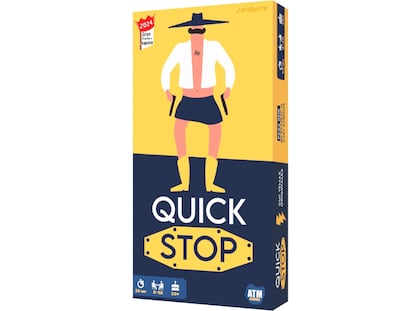Cable sobre los planes de Sendero luminoso
En 2006, el jefe de los servicios de inteligencia de Perú explica al embajador peruano los planes de Sendero Luminoso
| ID: | 52989 |
| Date: | 2006-02-14 18:09:00 |
| Origin: | 06LIMA622 |
| Source: | Embassy Lima |
| Classification: | SECRET |
| Dunno: | 05LIMA5203 05LIMA5397 |
| Destination: | P 141809Z FEB 06 FM AMEMBASSY LIMA TO SECSTATE WASHDC PRIORITY 8733 INFO AMEMBASSY BOGOTA PRIORITY AMEMBASSY CARACAS PRIORITY AMEMBASSY LA PAZ PRIORITY AMEMBASSY QUITO PRIORITY AMEMBASSY SANTIAGO PRIORITY AMCONSUL GUAYAQUIL PRIORITY CIA WASHDC PRIORITY DIA WASHDC PRIORITY |
S E C R E T LIMA 000622 E.O. 12958: DECL: 02/09/2031 TAGS: PTER, PGOV, PE SUBJECT: NATIONAL INTELLIGENCE DIRECTOR'S BRIEFING ON SENDERO LUMINOSO REF: A. 05 LIMA 5397 B. 05 LIMA 5203 Classified By: D/Polcouns Art Muirhead for Reason 1.4 (B, D) 1. (S) SUMMARY. National Intelligence Directorate Chief Julio Raygada sees SL as collaborating with the narcotics trade, but does not consider the Senderistas to be simply "narco-terrorists;" he asserts that the group remains ideologically focused in its activities. Raygada points out that in recent fatal attacks, SL employed its traditional tactic of using a temporary strike force that fades back to civilian cover. He believes SL intends to use this technique to increase the pace of its "popular war" through selective assassinations and armed take-overs of villages, eventually carrying its struggle from the countryside to the cities. There is increased SL political activity throughout the country, including reinvigoration of regional committees, and infiltration of vulnerable institutions. SL is thriving militarily by preying on economic activity in Peru's interior, not just from protecting narcotics trafficking, but also through bribes from illegal loggers, fuel smugglers, fruit growers and sugar producers. END SUMMARY. 2. (C) Ambassador received a briefing on 1/26 from DINI (National Intelligence Directorate) Chief Admiral (R) Julio Raygada on the organization and current direction of Sendero Luminoso (SL). Raygada had served as the Acting Director of National Intelligence for over a year while Peru's intelligence systems were undergoing reorganization, and he became the permanent DINI head after the regulations on Peru's new National Intelligence System (SINA) were published in the Official Gazette on January 4. On 2/2, Raygada gave D/Polcouns an expanded version of the SL briefing, the salient points of which follow. 3. (S) Although he stressed at the outset that he does not equate Peru's situation with Colombia's, Raygada expressed concern about the growth of coca cultivation here. DINI believes that coca cultivation has grown from 44,000 hectares in 2004 to 56,000 hectares currently. In addition, the density of cultivation has increased, especially in non-traditional areas, meaning that the potential for cocaine production in Peru has increased by an even greater margin. Traffickers export coca paste and cocaine with relative ease using medium to large ocean-going vessels, departing in many cases from the southern coast of Peru. Areas of intense coca cultivation, in particular the Monzon Valley, have become in essence liberated areas, with little state presence. Groups with political agendas, not just SL but also Ollanta Humala's Nationalist Party and the Peruvian Communist Party, are attempting to portray themselves as the advocates of coca producers. 4. (S) Although Raygada sees SL as collaborating with the narcotics trade in ways that are similar to Colombia's FARC, he does not believe that the Senderistas have morphed into "narco-terrorists." He thinks instead that SL continues to adhere to many of its own distinct tactics and long-term objectives. SL does not maintain a uniformed standing army. SL tactics in recent fatal attacks (Refs) have tended even more toward their traditional approach of putting together a temporary strike force that carries out an operation and goes back to civilian cover. SL intends to use this technique to increase the pace of its "popular war," eventually carrying this struggle from the countryside to the cities. There are indications that Sendero is reviving its practice of selective assassinations, and of armed take-overs of villages to capture and gather information on opponents. 5. (S) SL is also undergoing renewed efforts to fortify its infrastructure and bases of support. 10,057 persons accused or convicted of terrorist activity were released from jail between 1982 and 2005, and many have retained their connection with SL. Raygada believes that SL has 2,000 active members at present, although just a few hundred are armed combatants. SL documents recently seized by the police refer to the group's historic and doctinaire view of their struggle to come to power. The documents make reference to the "Fight on Two Fronts" (i.e. armed and political, abbreviated as L2L in Spanish), and to passing into the "Fourth Phase" (NFI) of SL's revolution against the Peruvian State. 6. (S) SL's political strategy is to organize "pockets" of activity: reinvigorated regional committees in the north, south, central highlands, Huallaga Valley and metropolitan Lima; "popular committees" engaged in fund-raising in 70 villages throughout the coca zone; control of Peruvian Popular Aid (Socorro Popular del Peru), an NGO that was initially created to support families of prisoners; infiltration of rural peasant patrols (groups originally created to oppose Sendero) in coca-growing areas; infiltration of the radio broadcast industry, in particular in the northern cone of Lima; and positioning members in key positions in universities and in the national teachers union. Raygada also alleged that NGOs such as the Legal Defense Institute (IDL) and Living Justice (Justicia Viva), which have received Embassy funding support, are knowing advocates of Sendero. 7. (S) Militarily, the SL combatants in the north (Huallaga Valley) are well organized in columns SL refers to as "mobile networks" of 12 to 30 individuals. These groups prey upon the economic activity (licit and illicit) along the Belaunde and Basadre Highways. There are three different groups of SL combatants in the south (Apurimac and Ene Valleys). These groups are more widely separated than those in the north, and tend to live in jungle camps, rather than under cover in villages (as in the north). Besides "assessments" (cupos) for protecting narcotics trafficking, the SL combatants in both regions receive money from illegal loggers, fuel smugglers, fruit growers and sugar producers. DINI recently received information that SL had gotten $10,000 (possibly a loan) from the Peruvian Communist Party. DINI believes SL has also solicited funds from the FARC. POWERS |
Traducción automática. Puede que el texto traducido no sea fiel al original
Tu suscripción se está usando en otro dispositivo
¿Quieres añadir otro usuario a tu suscripción?
Si continúas leyendo en este dispositivo, no se podrá leer en el otro.
FlechaTu suscripción se está usando en otro dispositivo y solo puedes acceder a EL PAÍS desde un dispositivo a la vez.
Si quieres compartir tu cuenta, cambia tu suscripción a la modalidad Premium, así podrás añadir otro usuario. Cada uno accederá con su propia cuenta de email, lo que os permitirá personalizar vuestra experiencia en EL PAÍS.
¿Tienes una suscripción de empresa? Accede aquí para contratar más cuentas.
En el caso de no saber quién está usando tu cuenta, te recomendamos cambiar tu contraseña aquí.
Si decides continuar compartiendo tu cuenta, este mensaje se mostrará en tu dispositivo y en el de la otra persona que está usando tu cuenta de forma indefinida, afectando a tu experiencia de lectura. Puedes consultar aquí los términos y condiciones de la suscripción digital.
Archivado En
Últimas noticias
No, no es tu imaginación: las mujeres duermen peor que los hombres (y hay razones médicas y sociales)
Así cambia el roscón de Reyes según el país (y no siempre tiene agujero)
La borrasca Francis trae una semana de frío, nieve y heladas
Entre la continuidad chavista y la transición vigilada: qué ha pasado en Venezuela tras la captura de Maduro
Lo más visto
- Última hora de Nicolás Maduro detenido y el ataque de EE UU a Venezuela, en directo | Trump vaticina que Cuba “está a punto de caer”
- El ataque de Estados Unidos a Venezuela amenaza con provocar una nueva subida del precio del petróleo
- El puto amo
- Rusia muestra su “solidaridad” con Venezuela pero descarta actuar en defensa de su aliado
- Un topo en el corazón del régimen: un agente de la CIA en el Gobierno fue clave para capturar a Maduro




























































